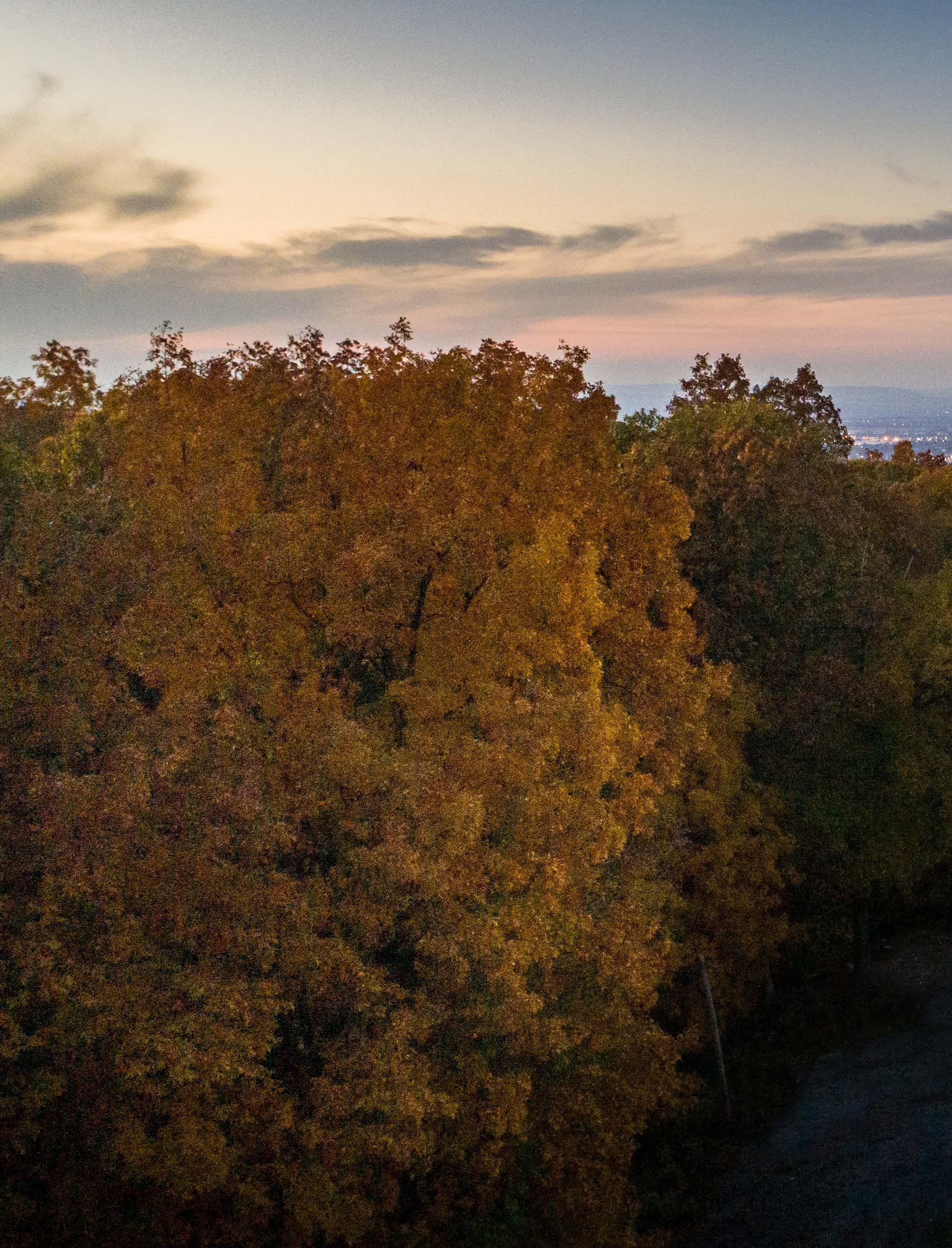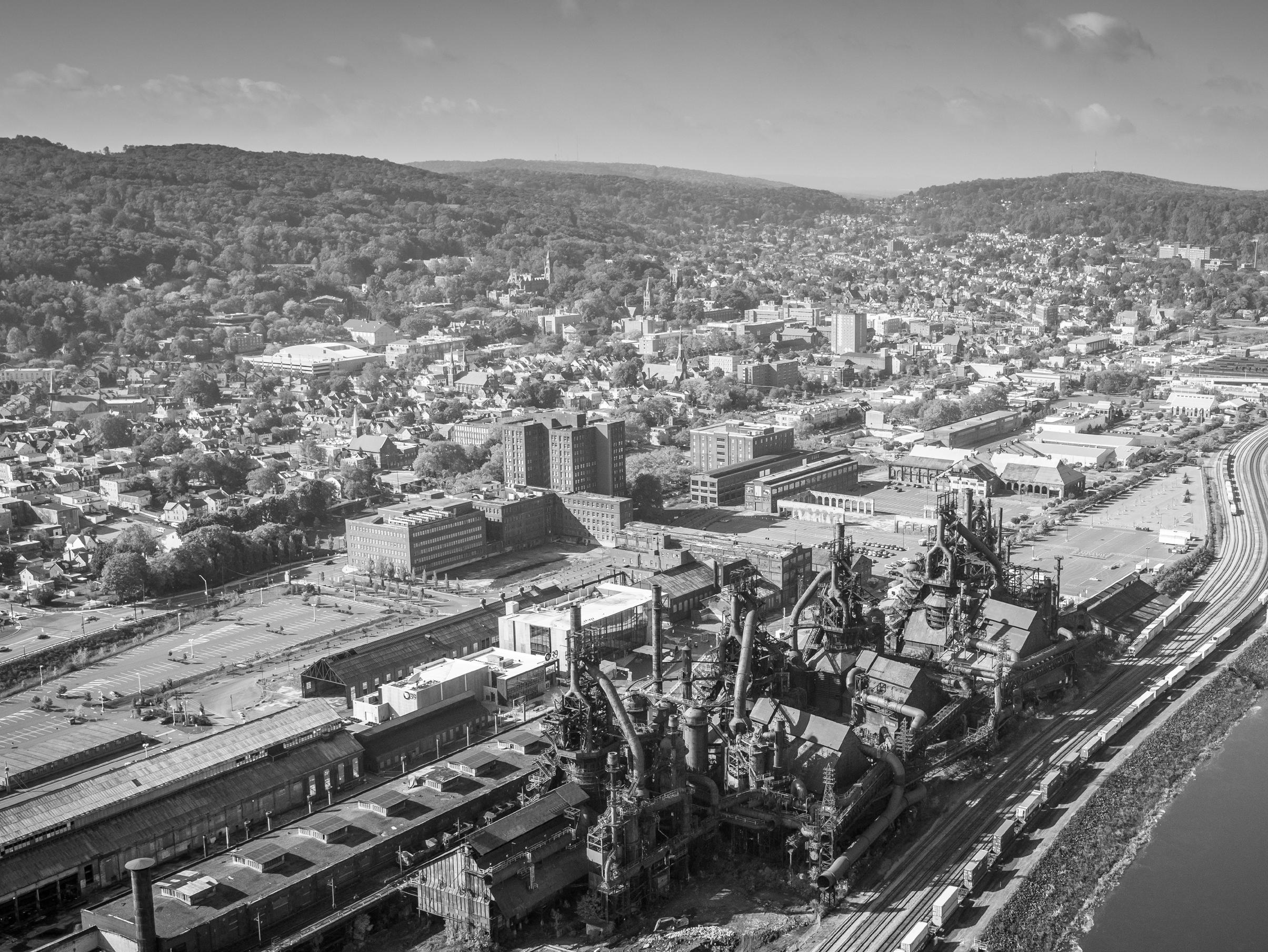
4 minute read
The Star of Bethlehem
BY FREDERICK JERANT
Driving around the Lehigh Valley, you’ve doubtlessly noticed a handful of towns with names straight out of the Bible: Egypt, Nazareth, Emmaus, and (Mount) Bethel, for example.
Advertisement


But perhaps the best known is the little town of Bethlehem, also known as “Christmas City USA.”
It was founded on Christmas Eve 1741, when David Nitschmann and Count Nicolaus Zinzendorf established a Moravian mission community at the junction of the Monacacy Creek and the Lehigh River.
The first residents surely brought with them the so-called “Moravian star,” (in German: Herrnhuter Stern) an intricate illuminated decoration associated with the Advent, Christmas, or Epiphany seasons. They appear widely in Germany and other parts of Europe, as well as the U.S.
The original 25-point design, technically known as an “augmented rhombicuboctahedron,” emerged in the 1830s at a Moravian boys’ school in Germany, possibly as part of a geometry lesson. They eventually became popular enough to warrant commercial production, and now similar stars having as many as 110 points are available. Matthew’s biblical account of the Nativity story depicts a special star guiding the Magi (see sidebar on opposite page) to the place of Jesus’ birth (curiously enough, Matthew’s Gospel is the only account in which the star is mentioned).
The star itself is subject to a range of interpretations: for some, it’s a miraculous sign; for others, the fulfillment of the Star Prophecy. Astronomers have suggested that it was a conjunction of Jupiter and Venus, or a supernova. And some scholars believe the entire story is a “pious fiction.”
Whatever your beliefs, it’s easy to see how stars have become inextricably linked to our own Bethlehem. And while Moravian stars are common decorations throughout the city, one Christmas star shines brighter than all of them. That’s the Christmas Star atop South Mountain. Rising 890’ above street level, its illuminated northern and southern faces can be seen over 20 miles away.

A part of Bethlehem’s skyline for nearly three-quarters of a century, the structure has evolved over time.
Its official debut came in 1937 – the same year that Bethlehem declared itself to be “Christmas City, USA”. The structure was created from four huge plywood planks, criss-crossed to form an eight-point star. Pennsylvania Power and Light (now PPL) and the Bethlehem water department collaborated on erecting it.
Rolland J. Adams, then-owner of the nowdefunct Bethlehem Globe-Times newspaper, paid for the project himself as a gift to the city – a total of $460 (that’s just over $8300 in today’s money).
WISE MEN
Practically everyone knows the story of the Three Wise Men and their pilgrimage to Bethlehem. Let’s dig a little deeper.
What are Magi? It’s the plural form of “magus,” a priest in Zoroastrianism. The word eventually evolved into “magic.”
They weren’t kings. It’s more likely that they were astrologers. Their religious practice included studying the stars, and astrology was considered a science in their time.
Then why are they called kings? Several Old Testament prophecies said the Messiah would be adored by kings. Over time, the trio’s rank was elevated.
They’ve had a variety of names. Although they’re unnamed in the Bible, the Magi have traditionally been called Melchior, Caspar and Balthazar. Some Syrian Christians name them Larvandad, Gushnasaph, and Hormisdas. Eastern churches tag them as Hor, Karsudan, and Basanater; to Armenian Catholics, they’re known as Kagpha, Badadakharida and Badadilma.
FRANKINCENSE? MYRRH? Both substances were highly valued and often presented to kings as gifts. Frankincense was commonly used in perfumery; myrrh was often used in holy anointing rituals. They’re derived from the sap of certain prized trees grown in the Arabian Peninsula and northeast Africa.
They sometimes follow Santa Claus. “Three Kings Day” occurs on January 6. Kids in Spain and Latin America often put their shoes outside the door, so the Kings may visit and leave them presents.
They were key players in an American opera. Amahl and the Night Visitors by Gian Carlo Menotti tells the tale of a crippled boy’s meeting with the Magi, resulting in his joining them on their journey. It premiered on NBC television in 1951. The first star measured 61’ tall by 51’ wide and was strung with 100 incandescent bulbs.
But just two years later, a 10-story steel star replaced it. The former Bethlehem Steel Corporation produced the metal and built the star. While keeping the original eight-point design, it was refashioned to a horizontal span of 81’ and a vertical rise of 53’. Lit with 280 bulbs, it was reputed, at the time, to be the tallest single electric-light display in the world.
The original wooden star was later donated to the Pittsburgh Optimists Club. Affixed to a tower in the city’s Mt. Washington section, it symbolized the club’s annual toy drive. The star was reportedly dismantled in the mid-‘60s, and its final fate is unknown.
The current Bethlehem star went up in 1967, and outshone all the other versions. Standing 91’ high and 40’ wide, the star’s steel frame was reinforced with a new concrete base. Over 250 25-watt lamps blazed through the darkness.
In 2010, the city installed over 250 energy-efficient LED lamps that have also reduced maintenance costs. Previously, each biennial replacement of the bulbs cost the city $6,000. The LEDs are expected to last a couple of decades.
Thus, it’s no surprise that the distinctive design has come to represent the City itself. A stylized version appears on signs, decorations, publications – heck, it even appears as part of the surface of Main Street!







